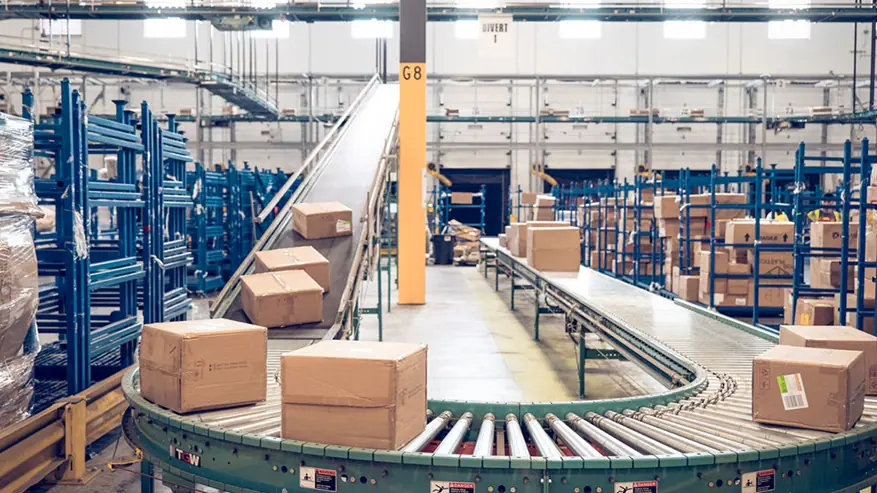Key takeaways
- Reverse logistics performance in the current competitive company environment depends on a knowledge of the significance of effective client returns.
- Companies may lower expenses while simultaneously increasing consumer satisfaction and fostering steadfast loyalty by streamlining their return procedures.
- Businesses may guarantee a seamless and satisfying returns experience by putting in place an efficient returns management system, using technology to expedite processing, enhancing customer communication, and analyzing data to spot trends.
- Enterprises may enhance their overall supply chain operations and set themselves apart from competitors by emphasizing effective customer returns.

introduction
Effective customer returns can make or destroy a business in today’s cutthroat industry. By concentrating on improving the returns process, companies can lower operating expenses while simultaneously increasing customer satisfaction and loyalty. The secret is to put in place a strong returns management system with well-defined guidelines, easy-to-use return routes, and reliable tracking tools. Reverse logistics can operate more efficiently overall and expedite the returns process by utilizing technologies like barcode scanning and AI/ML analytics. Building trust and loyalty with clients also requires effective communication throughout the returns process. Businesses can proactively solve problems and optimize their returns processes for long-term market performance by evaluating data and spotting trends.
Understanding the importance of efficient customer returns
Effective customer return management is essential for companies that use reverse logistics. Businesses can improve customer happiness and streamline operations by realizing the value of effective customer returns. Efficient handling of returns not only lowers expenses but also builds customer loyalty and trust.
Cutting down on operating costs is a major factor in the efficient customer return strategy. Companies can prevent needless expenses related to returns, such as labor, shipping, and storage fees, by putting in place efficient procedures. Effective returns management also lessens the impact on the overall supply chain operations and lowers the risk of inventory obsolescence.
Enhanced customer satisfaction is also a result of effective customer returns. Customers are more likely to trust a business and make more purchases when they have an easy returns process. In addition to building enduring customer relationships, businesses can improve their brand reputation by offering exceptional service during the returns process.
In summary, companies involved in reverse logistics must comprehend the significance of effective client returns. Businesses can save expenses, raise customer happiness, and fortify their supply chain operations overall by streamlining their returns procedures.
Implementing an effective returns management system
The implementation of an efficient returns management system is crucial for the efficient administration of customer returns. This system ought to have a number of steps and protocols created to manage returns in an efficient and well-structured way.
A straightforward returns policy is one of the most important elements of a successful returns management system. Businesses may reduce confusion and disputes and set clear expectations for consumers by providing explicit return policies that include timelines, condition criteria, and choices for refunds or exchanges.
The creation of approved return channels is a crucial component of a successful returns management system. Businesses can give customers flexibility and convenience while guaranteeing prompt return processing by giving them several options for returning merchandise, such as drop-off locations, mail-in returns, and in-store returns.
A strong tracking and monitoring system should also be a part of a successful returns management system. Businesses may guarantee prompt processing and resolution, follow the status of returns, and detect bottlenecks by employing technological solutions like RFID tagging and barcode scanning.
To sum up, handling client returns effectively requires the implementation of an efficient returns management system. Businesses can improve customer satisfaction and expedite the returns process by implementing clear regulations, providing convenient return routes, and leveraging tracking technologies. satisfaction.
Utilizing technology for streamlined returns processing
In order to improve efficiency in reverse logistics and streamline the processing of returns, technology is essential. Businesses may streamline the returns process and increase customer satisfaction by automating certain parts of it with the help of cutting-edge technology solutions.
Barcode scanning is one piece of technology that can be used to expedite the returns processing process. Businesses can quickly and precisely identify returned goods, follow their progress, and instantly update inventory records by putting barcode scanning systems in place. This guarantees correct inventory management, lowers the possibility of errors, and expedites the returns procedure.
Automated sorting systems are another piece of technology that can be utilized for effective returns processing. These systems automatically sort returned goods according to destination, condition, or any other given set of parameters. Businesses can save time, cut labor expenses, and boost overall operational efficiency by doing away with the need for manual sorting.
Moreover, technologies for machine learning (ML) and artificial intelligence (AI) can be used to examine returned data and spot trends or patterns. Businesses can uncover problems with product quality, learn important lessons from the analysis of this data, and take proactive steps to stop returns in the future.
In conclusion, optimizing reverse logistics efficiency requires leveraging technology to facilitate returns processing. Utilizing innovations like AI/ML analytics, automated sorting systems, and barcode scanning, businesses can enhance the returns process, reduce errors, and optimize overall operations.

Improving communication with customers during the returns process
In order to guarantee a seamless and happy return process, effective customer communication is essential. Businesses may increase customer happiness, lower customer queries, and foster loyalty by strengthening communication.
Giving precise directions on how to start a return is one method to enhance communication. There are a number of ways to accomplish this, including through the corporate website, product packaging, and customer care agents. Businesses may avoid confusion and errors and educate clients through the returns process by offering step-by-step instructions.
Businesses should also set up a variety of communication channels in order to accommodate the preferences of their clientele. Options like phone, email, live chat, and social media may be included in this. Diverse communication channels allow firms to adapt to the varying tastes of their customers and provide timely response and resolution.
Furthermore, it is imperative to maintain proactive communication in order to apprise clients of the progress of their returns. Automated notifications, such “return received,” “refund processed,” or “exchange shipped,” keep consumers informed and minimize the need for them to get in touch with customer support. This lessens the workload for customer support agents while simultaneously increasing client happiness.
In conclusion, strengthening customer relationships and raising customer satisfaction require better customer communication throughout the returns process. Businesses may guarantee a seamless and satisfying returns experience by giving customers clear instructions, several communication channels, and proactive updates.
Analyzing data to identify trends and optimize the returns process
In order to optimize the returns process and spot trends or potential areas for improvement in reverse logistics, data analysis is an essential first step. Businesses may discover patterns, obtain insightful knowledge into the causes of returns, and take proactive steps to streamline their return procedures by utilizing data analytics.
Sorting returns according to several criteria, such the kind of goods, the reason for the return, or the customer’s location, is one approach to examine data. Businesses can spot trends and patterns, such frequent product flaws or consumer discontent with particular features, by classifying returns. The quality of the products may then be raised, common problems can be fixed, and the overall amount of returns can be decreased.
Root cause analysis is an additional method for data analysis. Businesses can identify the root causes of returns, such as inaccurate product descriptions, problems with packaging, or shipment damage, by examining return data. This enables companies to implement remedial measures, such revising product descriptions, enhancing packaging, or collaborating with shipping partners to reduce damages.
Data analysis can also be used to find areas where process optimization can be improved. Businesses can pinpoint areas where the returns process needs to be optimized or streamlined by examining return processing timeframes, bottlenecks, or consumer feedback. This may entail improving communication routes, optimizing staffing levels, or putting automation into place.
In conclusion, data analysis is critical to enhancing the effectiveness of reverse logistics and the returns process. Businesses may decrease the quantity of returns, improve customer happiness, and optimize their overall returns management by classifying returns, determining the underlying causes, and spotting possibilities for process optimization.
Conclusion
In summary, it is clear that companies involved in reverse logistics need to manage client returns effectively. Businesses can streamline their returns procedures, cut costs, raise customer satisfaction, and fortify their supply chain operations by putting in place an efficient returns management system, using technology to expedite processing, enhancing customer communication, and analyzing data to spot trends. Businesses can develop long-term connections, trust, and loyalty with their consumers by putting a high priority on customer returns. This will eventually lead to sustainable growth and success in the cutthroat market.

FAQ
What is management of returns reverse logistics?
Reverse logistics refers to the process of managing the return of products from customers back to the business. In the context of returns management, reverse logistics involves handling returned items, processing them efficiently, and determining the best course of action for each returned product. This includes inspecting returned items, assessing their condition, restocking them if possible, and disposing of them properly if necessary. Effective management of returns reverse logistics is essential for businesses to streamline their operations, reduce costs, and maintain customer satisfaction. By implementing sound reverse logistics practices, businesses can ensure that returned products are handled in a timely and organized manner, ultimately contributing to a more efficient and customer-centric returns process.
What is the process of managing returned goods?
The process of managing returned goods involves several key steps to ensure efficiency and customer satisfaction. Firstly, upon receiving a returned item, businesses need to inspect it thoroughly to determine its condition and whether it can be restocked or needs to be disposed of. This inspection process is crucial in assessing the quality of the returned goods and deciding on the next course of action.
Once the condition of the returned goods is determined, businesses need to update their inventory records accordingly. This involves updating product availability, stock levels, and ensuring accurate tracking of returned items. By maintaining up-to-date inventory records, businesses can effectively manage their stock and prevent discrepancies in their product listings.
After updating inventory records, businesses need to process the return based on their established policies. This may involve issuing a refund, processing an exchange, or providing store credit to the customer. Clear and transparent return policies help streamline this process and ensure consistency in handling returns.
In cases where returned goods can be restocked, businesses need to properly store and organize them for resale. This may involve refurbishing or repackaging returned items to ensure they meet the required standards before being put back on the shelves. Proper handling and storage of returned goods are essential to maintain product quality and prevent any issues with reselling them.
Overall, the process of managing returned goods requires attention to detail, effective communication with customers, and adherence to established procedures. By following these steps diligently, businesses can optimize their returns management process, reduce costs, and enhance customer satisfaction.
What are four key strategies to manage reverse logistics flows?
Four key strategies to manage reverse logistics flows include implementing efficient returns management systems, leveraging technology for streamlined processing, improving communication with customers, and analyzing data to identify trends and optimize the returns process.
Effective returns management systems help businesses handle returned items efficiently, determine the best course of action for each product, and maintain customer satisfaction. By establishing clear return policies, inspecting returned goods thoroughly, updating inventory records accurately, and processing returns promptly, businesses can streamline their reverse logistics operations.
Utilizing technology such as barcode scanning, automated sorting systems, and AI/ML analytics can further enhance the returns process. These technologies help businesses analyze return data, identify patterns or trends, gain valuable insights into the reasons for returns, and take proactive measures to prevent future returns. Streamlining processing through technology not only improves efficiency but also reduces errors and optimizes overall operations.
Improving communication with customers is vital during the returns process to ensure a smooth and satisfactory experience. By providing clear instructions on how to initiate a return, offering multiple communication channels, and proactively updating customers on the status of their returns, businesses can enhance customer satisfaction, reduce inquiries, and build trust and loyalty.
Analyzing data is essential for optimizing the returns process and identifying trends or areas for improvement in reverse logistics. By categorizing returns, identifying root causes, and identifying opportunities for process optimization, businesses can reduce the number of returns, enhance customer satisfaction, and optimize their overall returns management. This data-driven approach helps businesses make informed decisions, improve efficiency, and strengthen their supply chain operations.
In conclusion, by implementing these four key strategies, businesses can effectively manage reverse logistics flows, reduce costs, enhance customer satisfaction, and strengthen their overall operations in the competitive market.
What is the return management process in supply chain strategy?
The return management process in the supply chain strategy plays a crucial role in optimizing operations and enhancing customer satisfaction. In this process, businesses must carefully handle returned items, assess their condition, update inventory records, and determine the best course of action for each product. By efficiently managing returned goods, businesses can streamline their reverse logistics operations, reduce costs, and maintain a positive relationship with customers.
One key aspect of the return management process is establishing clear return policies and procedures. By outlining how returns should be initiated, inspected, processed, and resolved, businesses can ensure consistency and transparency in handling returned items. Clear communication with customers regarding the return process is also essential to provide a smooth and satisfactory experience.
Incorporating technology into the return management process can further streamline operations and improve efficiency. Utilizing barcode scanning, automated sorting systems, and data analytics tools can help businesses track returned items, identify trends or patterns, and make informed decisions to optimize their returns processes. By leveraging technology, businesses can enhance their supply chain strategy and stay competitive in the market.
Overall, the return management process in the supply chain strategy is a critical component of effective reverse logistics. By implementing clear policies, utilizing technology, and prioritizing customer communication, businesses can optimize their returns processes, reduce costs, and strengthen their overall operations. This strategic approach to return management contributes to improved efficiency, customer satisfaction, and long-term success in the competitive market.
Hope this article was helpful for more check out our previous blog post by clicking here

